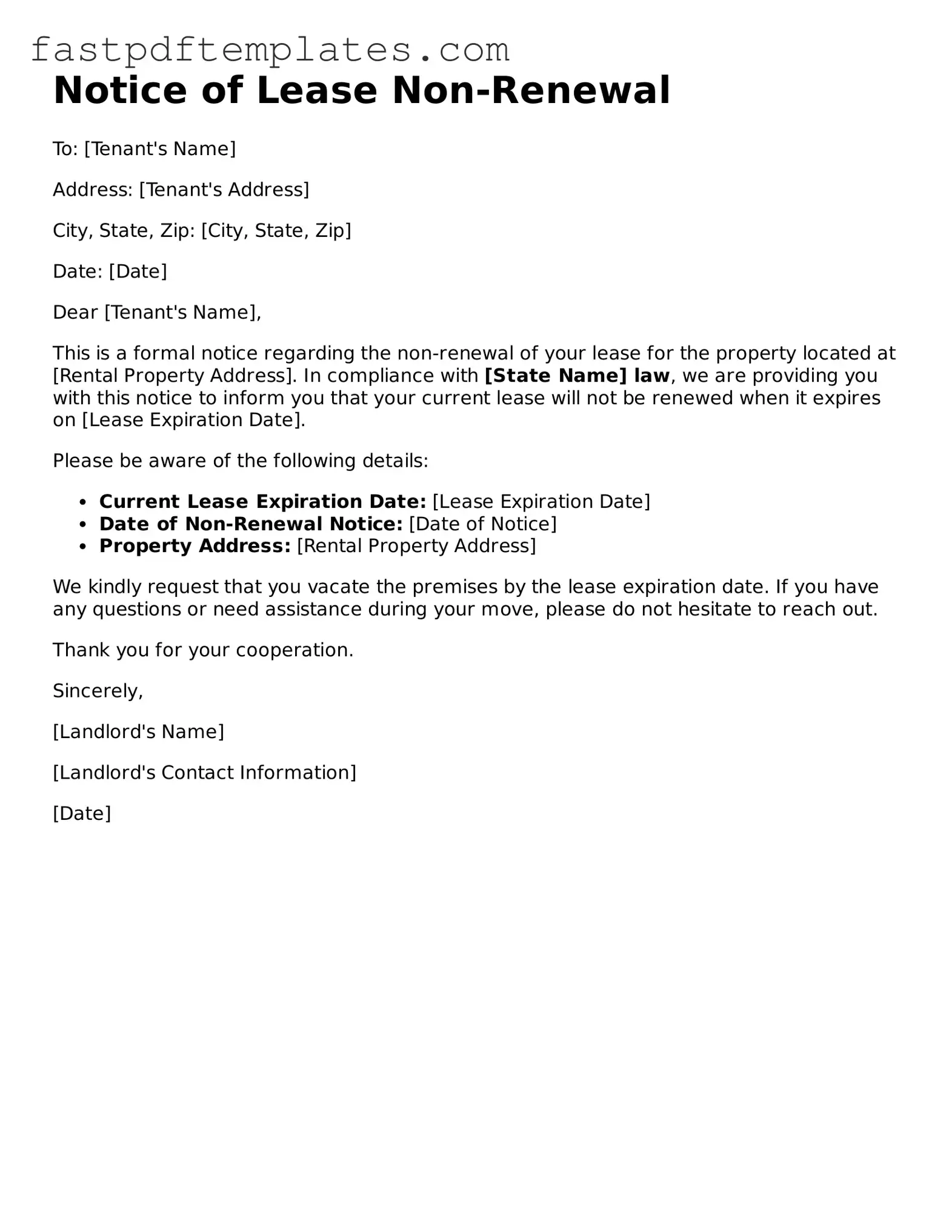Fillable Notice of Lease Non-Renewal Document
The Notice of Lease Non-Renewal form is a document used by landlords or tenants to formally communicate the decision not to renew a lease agreement. This notice serves as a crucial step in the lease termination process, ensuring that both parties are aware of the impending end of the lease term. Understanding how to properly use this form can help prevent misunderstandings and potential disputes.
Access Document
